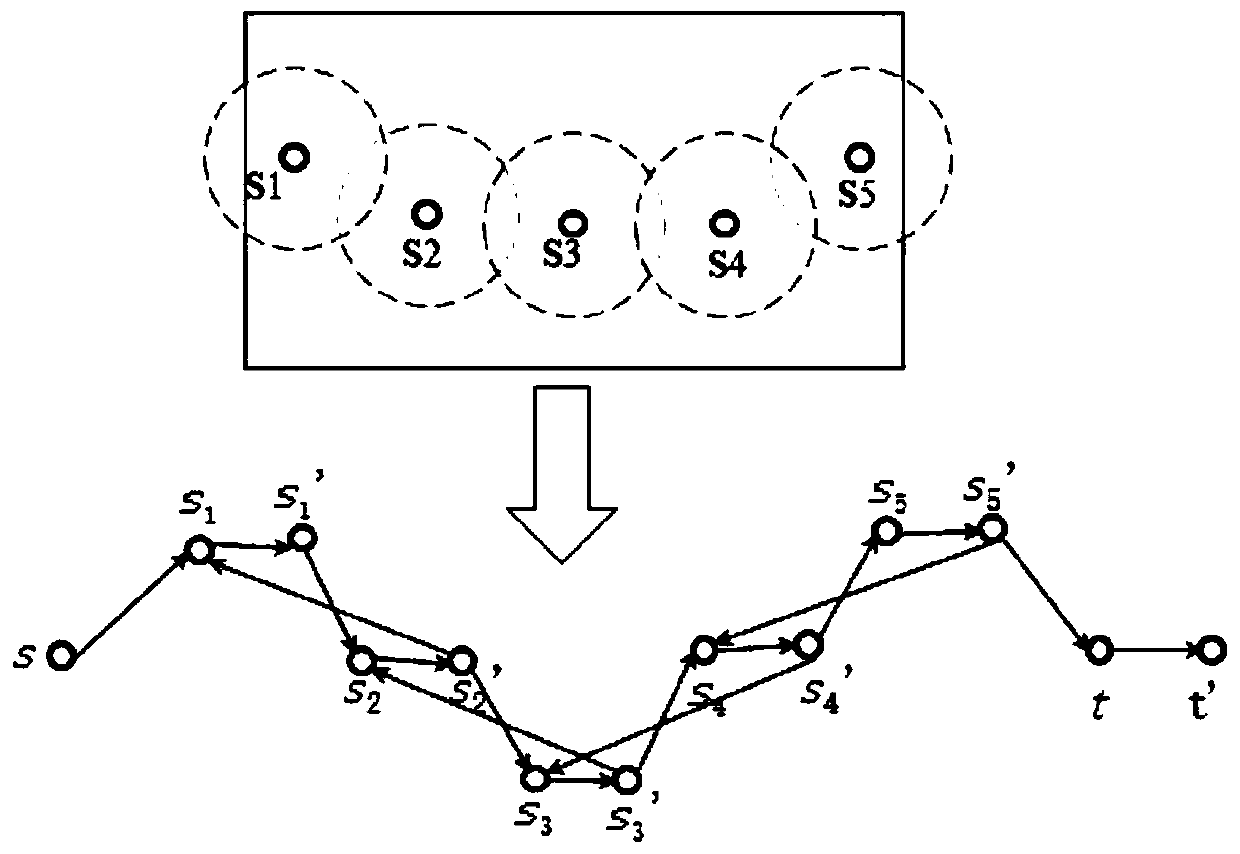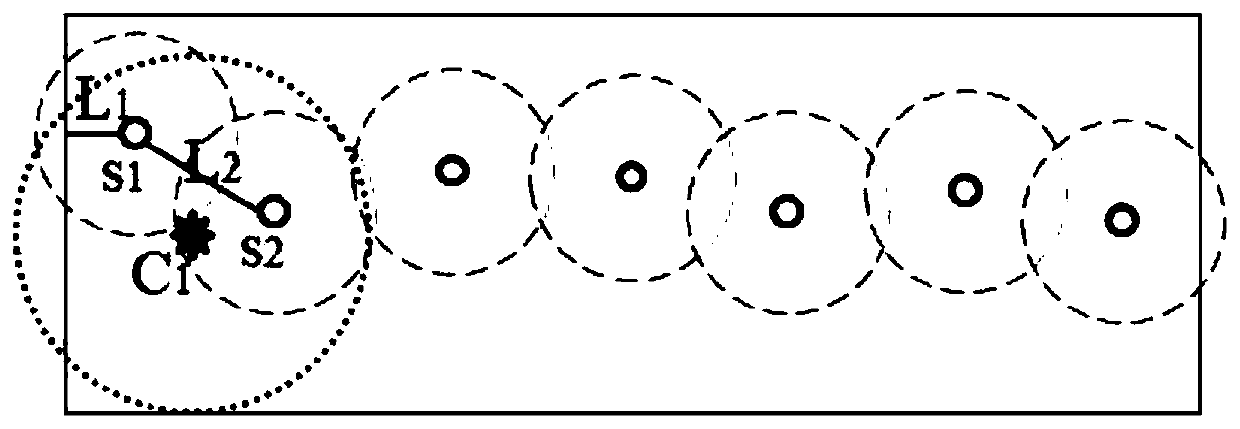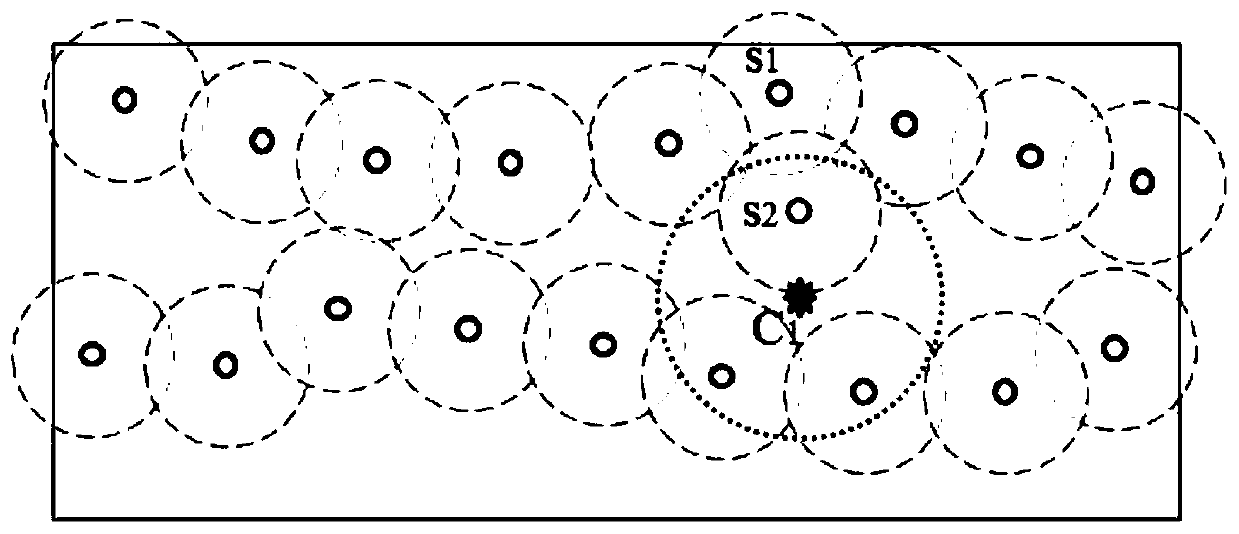K-fence construction and charger optimal deployment method for wireless rechargeable sensor network
A sensor and sensor network technology, used in wireless communication, instrumentation, network planning, etc., can solve problems such as the inability to guarantee the continuous and permanent operation of the network.
- Summary
- Abstract
- Description
- Claims
- Application Information
AI Technical Summary
Problems solved by technology
Method used
Image
Examples
Embodiment Construction
[0034] The present invention will be further described below in conjunction with accompanying drawing.
[0035] like Figure 1-5 As shown, the present invention mainly proposes a method for constructing a k-fence of a wireless rechargeable sensor network and optimizing a charger for deployment. All sensors are omni-directional sensors with the same specifications, they have the same monitoring coverage radius, and can perform omni-directional monitoring. In a 2D area scene of L*H size, N sensors have been randomly deployed in advance, but no fence coverage has been formed. It is necessary to schedule sensor nodes to form k fences, so that the monitoring network can run continuously.
[0036] according to figure 1 Schematic diagram of the model, the wireless sensor network used in the present invention is as follows: N omnidirectional sensors are randomly deployed in a two-dimensional narrowband area of interest. Initially, the location, coverage and coverage energy consum...
PUM
 Login to View More
Login to View More Abstract
Description
Claims
Application Information
 Login to View More
Login to View More - R&D
- Intellectual Property
- Life Sciences
- Materials
- Tech Scout
- Unparalleled Data Quality
- Higher Quality Content
- 60% Fewer Hallucinations
Browse by: Latest US Patents, China's latest patents, Technical Efficacy Thesaurus, Application Domain, Technology Topic, Popular Technical Reports.
© 2025 PatSnap. All rights reserved.Legal|Privacy policy|Modern Slavery Act Transparency Statement|Sitemap|About US| Contact US: help@patsnap.com



